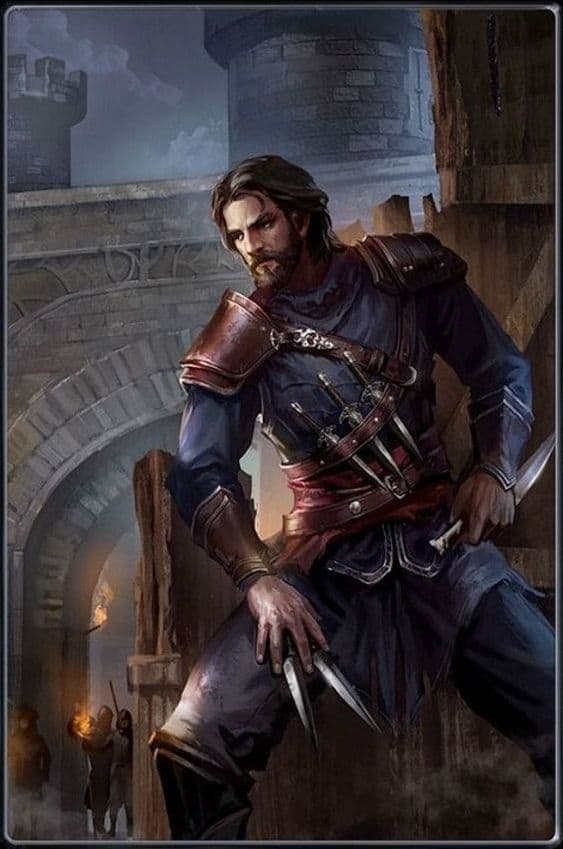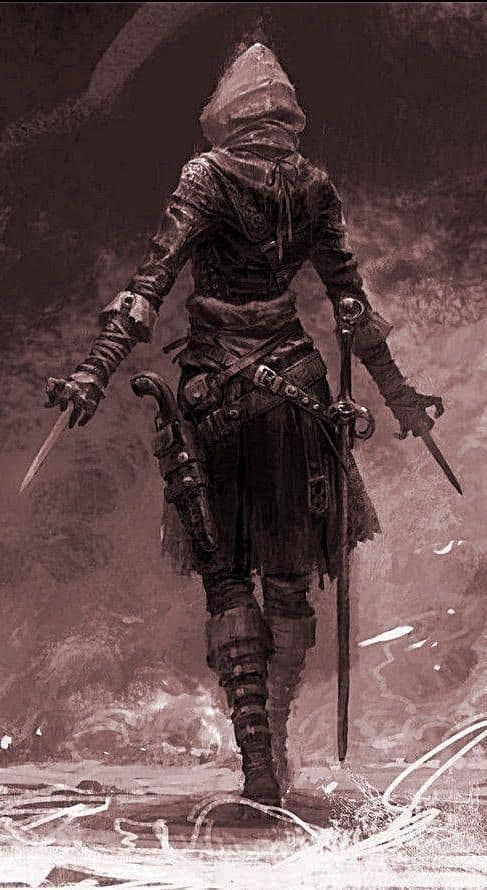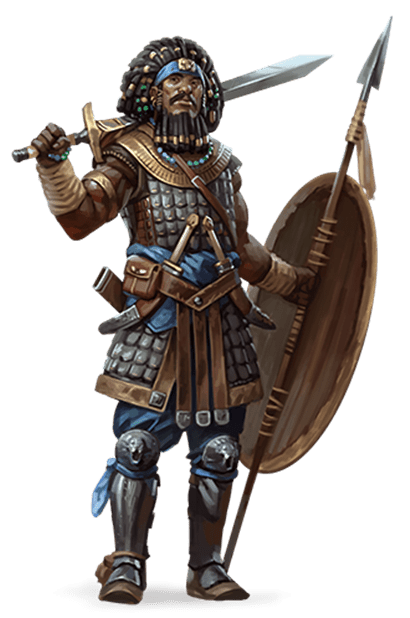D&D 5e: Death Domain Cleric Guide

D&D 5e: Death Domain Cleric Guide
Role in the Party
The unique Death Domain Cleric is one of only two subclasses found in the Dungeon Master’s Guide: they’re meant as a source of NPC features but can be used by players with the DM’s permission.
The Death Cleric focuses on killing, murder, homicide, inflicting death, ending lives, and so on. The features mostly focus on dealing extra damage with your spells, although some of them underperform in this regard. You still have all of the other cleric features that let you do healing, support, and tanking when needed, but you likely want to play your character as more of a damage dealer.
Epic
Good
Meh
Bad
The Death Domain Cleric subclass is found in the Dungeon Master’s Guide. Click here to pick up your own copy of the Dungeon Master’s Guide!
Death Domain Cleric Features
Domain Spells:
1st: False Life can be useful despite its underwhelming temporary hit point total, and Ray of Sickness requires both a successful attack and a constitution saving throw to inflict the poisoned condition. Guiding Bolt and Inflict Wounds are usually superior options.
3rd: Blindness/Deafness is a solid spell, but it’s already a cleric spell so it’s more of a free spell preparation than a new spell. Ray of Enfeeblement is a single target debuff that can halve the damage dealt by some enemies on a successful attack roll: there’s a constitution save to end it at the end of each of the target’s turns though, so it may not last long, and it also costs concentration.
5th: Animate Dead is a solid summon option and thematic, but it’s already on the Cleric list. Vampiric Touch sucks since it’s hard to use effectively, and if you want out of combat healing, just use Aura of Vitality instead of tying someone up and using this spell on them.
7th: Blight doesn’t do enough damage to justify the spell slot, and Death Ward is a solid spell, especially at high levels, but it’s a Cleric spell already.
9th: Antilife Shell is an underrated druid spell that allows you to keep enemies out of a big area around you: it’s more effective if you can increase your size since that lets you cover more squares. Especially good against melee monsters. Cloudkill is an underwhelming spell since lots of enemies are starting to be immune to poison and lots of other enemies have high constitution saves, and enemies can just walk out of the area, but it is a wide area of effect option that can be deployed wherever you want. It may be useful for smoking enemies out of a tactical position.
Bonus Proficiency
When you choose this domain at 1st level, you gain proficiency with martial weapons.
Being proficient in martial weapons does not make it a good idea to use martial weapons. Cantrips are likely a superior option unless you’re doing an unusual build, especially with the next feature:
Reaper
At 1st level, you learn one necromancy cantrip of your choice from any spell list. When you cast a necromancy cantrip that normally targets only one creature, the spell can instead target two creatures within range and within 5 feet of each other.
Toll the Dead and Chill Touch are solid cantrips, but now you can double their impact if there are two enemies next to each other. There won’t be enemies next to each other in every round of every fight, but your cantrip power will be doubled when the enemies are arranged perfectly.
Channel Divinity: Touch of Death
Starting at 2nd level, you can use Channel Divinity to destroy another creature’s life force by touch. When you hit a creature with a melee attack, you can use Channel Divinity to deal extra necrotic damage to the target. The damage equals 5 + twice your cleric level.
Adding 9 damage to a 1d8+2 melee weapon attack doesn’t make that attack a good idea. You’ll probably want to use this with Inflict Wounds instead, which has a higher chance to hit and does much more damage. 3d10 isn’t bad low level damage and adding +9 or more to that gives you some better burst damage potential. Still, it’s not a ton of damage unless you’re at an extremely low level, your Channel Divinity has limited uses, and Inflict Wounds may not be the best use of your action or spell slots.
Remember that this also only applies to a single target of the spell: this is relevant for your level 17 feature.
Inescapable Destruction
Starting at 6th level, your ability to channel negative energy becomes more potent. Necrotic damage dealt by your cleric spells and Channel Divinity options ignores resistance to necrotic damage.
Some of your features will work against more enemies, but you don’t fight necrotic resistant enemies in all campaigns, and this does nothing against immunity. Radiant damage is also a common staple of the Cleric spell list, and almost nothing is resistant or immune to that. You’ll probably get some use out of this, but not much.
Divine Strike
At 8th level, you gain the ability to infuse your weapon strikes with necrotic energy. Once on each of your turns when you hit a creature with a weapon attack, you can cause the attack to deal an additional 1d8 necrotic damage to the target. When you reach 14th level, the extra damage increases to 2d8.
You’re a powerful spellcaster with upscaled cantrips. Using weapons as a cleric is almost always a bad idea, even if you somehow have Booming Blade or Green-Flame Blade. Take the optional Tasha’s feature to apply this to your cantrips instead, unless you wanted to do an unconventional weapon cleric build (which could work if you rolled amazingly on multiple ability scores)
Improved Reaper
Starting at 17th level, when you cast a necromancy spell of 1st through 5th level that targets only one creature, the spell can instead target two creatures within range and within 5 feet of each other. If the spell consumes its material components, you must provide them for each target.
I used online tools to build a full list of all Cleric spells that qualify for this feature: Inflict Wounds, Ray of Sickness (from this domain) Blindness/Deafness, Bestow Curse, Feign Death, Revivify, Contagion, and Raise Dead. Of these, two of them are resurrection spells that consume a material component so you can’t save money, and nearly all of the rest are crappy spells: only Inflict Wounds and Blindness/Deafness synergize with this feature particularly well, and Inflict Wounds isn’t doing great damage even if you upcast it (remember that your Channel Divinity only works on one target), and you can upcast Blindness/Deafness to 3rd level to do the same thing as this feature. There are no amazing spells to use this with and your best options are mediocre, and both creatures need to be next to each other.
Strengths
You will be the best cantrip user of any cleric, you get your best features at low levels where more campaigns take place, and you have good in-character reasons to build that undead army you always wanted to make. You are also a cleric, so your armor class is likely high, and you have some powerful spells.
Weaknesses
Your 1st level Reaper feature is the best feature your subclass offers, but it doesn’t make you amazing at dealing damage; cantrips are a low damage fallback option for spellcasters and it just improves them. Aside from your channel divinity at low levels and a few good domain spells, your subclass doesn’t give you much other than better cantrip usage.
Best Race Options
You may want to play as some kind of evil undead or undead-adjacent humanoid, so the Reborn race is the closest you can get to being an actual undead. You might even be a cool skeleton if your DM allows it.
Hexblood is another extra spooky race with connections to hags, and its free Disguise Self and Eerie Token feature can give you out of combat options that your subclass doesn’t give you.
Shadar-Kai Elves have necrotic damage resistance, so if you suspect you’re going to be in a campaign where overcoming enemy resistance is useful, you can go a step further and then become resistant to the enemy’s necrotic damage. You also get some other useful features, and your connection to the Shadowfell and the forces of death makes sense thematically.
Choosing the Right Skills
You are a cleric and intelligence is almost certainly not your highest ability score, so Religion proficiency will stop the party’s godless heathen wizard from knowing more about your own religion than you. Arcana is sensible for any spellcaster.
Your high Wisdom will make you solid with Perception, but proficiency for an even bigger bonus doesn’t hurt since it’s an important skill for everyone.
You don’t have heavy armor proficiency unless you multiclass, and you need some dexterity for armor class, so Athletics may not be your physical activity skill of choice. Acrobatics may be a better option for escaping grapples.
You don’t have to be evil as a Death Cleric, but you’re more likely to be evil than most clerics. Evil characters may get more use out of Intimidation and Sleight of Hand than good ones. Just make sure your fellow players are on board with you doing this, even if their characters don’t necessarily have to be.
You have a chance to be excellent with Medicine and Animal Handling, but these skills don’t come up very often, and Medicine is redundant with your healing magic. If you do choose to take proficiency in these, you will be vastly better at them than most of the other party members.
Fitting Feats
If you want to cast a powerful concentration spell and then run into melee to use an Inflict Wounds with your Channel Divinity, you will be hit more often than most spellcasters. War Caster and/or Resilient (Constitution) will protect your concentration, and the latter might boost an odd constitution score and give you more hit points. War Caster is especially useful since you can use your reaction to send an Inflict Wounds at someone if they provoke an opportunity attack from you.
Clerics and Druids are the only full casters without the Invisibility spell. Take Shadow Touched if you keep wishing you had it: you can also boost an odd wisdom score and gain an extra use of Inflict Wounds with this feat. Best taken at low levels.
The Mobile feat increases your speed and lets you move without provoking opportunity attacks if you use an Inflict Wounds. If you’re a squishier cleric, this feat will help you stay out of danger while delivering melee spells.
Optimal Backgrounds
Archaeologist is a solid background for any character obsessed with the dead. Studying the dead makes sense, and it’s a good reason to go dungeon delving too. It’s also a wonderful excuse to start spewing Indiana Jones quotes.
Good or evil, the Acolyte background is a standard pick for any cleric. Shelter of the Faithful may be useful in some campaigns.
Most Strixhaven backgrounds except for Witherbloom initiate will highly boost the power of your character. The only spell on the expanded spell list for Witherbloom that you don’t already have is Wither and Bloom.
Multiclassing Options
Your Reaper feature isn’t exclusive to Cleric cantrips, so you could stop at one Cleric level and go into the School of Necromancy Wizard from there. You’ll be a wizard who has medium armor and shield proficiency, more 1st level spells and cantrips, and the ability to double their cantrip damage sometimes by adding an extra target.
If you really want to use a weapon, you could take a one level Druid dip for Shillelagh so you can attack with your wisdom and use a blade cantrip. Your damage won’t be amazing, but you can at least hit more often without lowering your wisdom. Just keep the Druid armor restrictions in mind.
The Undead Warlock is an excellent pick. Form of Dread allows your Chill Touch to frighten enemies, and you gain some temporary hit points and immunity to the frightened condition while transformed. You may find it hard to fit a 13 or higher charisma on your build though.
Would I recommend playing a Death Domain Cleric?
Some other classes and subclasses can do what this class does. If you want necromancy spells, most spellcasters get them, if you want consistent damage every round, you can pick a class better suited to weapon damage or the warlock’s eldritch blast, and if you want to twin your spells, sorcerers and the Metamagic Adept feat can do that. However, the Death Domain cleric excels enough at low levels for me to recommend it over other options, even if it has problems at high levels.









